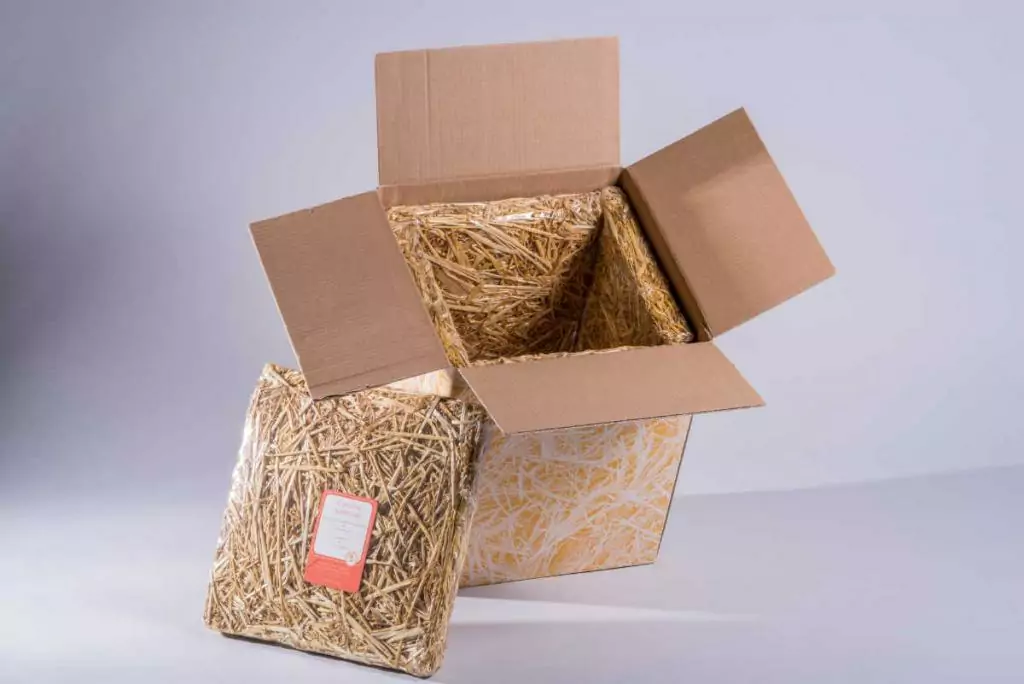Insulated packaging is used for products that are sensitive to temperature or environmental influences (see Temperature-controlled logistics). As a rule, they primarily ensure continuous compliance with the requirements of the cold chain within the supply or value chain.
Insulated packaging: active and passive cold chain
Foodstuffs, but also increasingly medical and chemical products, depend on maintaining their intact and sanitary condition during transport between manufacturer, wholesaler, retailer and the consumer; this condition depends above all on the optimum temperature. While in an active cold chain the inventory is subject to continuous refrigeration, temperature control and recording, and the corresponding vehicles and warehouses are equipped with refrigeration technology, in a passive cold chain the temperature is kept within a certain range by the use of insulating packaging; temperature control is not necessarily prescribed or necessary, but temperature maintenance can be additionally supported by dry ice, for example. Passive cooling mostly represents an intermediate stage of the cold chain, usually this concerns the way to the end consumer. Insulated packaging is also increasingly used in this process, and new solutions are constantly being developed in terms of materials and methods, also with a view to contemporary environmental compatibility.
Insulation techniques and temperature control
Transports with passive cooling can be carried out sporadically, seasonally or even all year round, depending on the inventory, duration, region and time of year. Since actively cooled transports incur significantly higher costs, transport service providers often decide on a daily or weather-dependent basis whether passive cooling is an option. In a conventional way, special packaging (insulated packaging) is used in combination with passive cooling by dry ice.
The increasing use of insulated packaging is closely linked to the steadily growing number of products requiring refrigeration. This growth is primarily attributable to areas of the pharmaceutical industry, the cosmetics sector and the food industry. GPS-based fleet management systems are increasingly being used to maintain temperature intervals. In this way, the cooling temperature can be permanently recorded and checked in order to be able to react quickly in the event of deviations. Since the legislator is prescribing more and more regulations and values, especially in the case of pharmaceuticals, cold chain management is now necessary in many of the companies concerned, which deals with the control and organization with regard to the cold chain, both in logistics and in production.
Technical systems / suppliers for temperature control
- Fresh Check
- The blue dot of the company BASF / Freshpoint (Israel)
- 3M / USA
- The CheckPoint label from Vitsab
- Plastic chip PolyTakSys / University
In this context, Radio Frequency Identification (RFID) is proving to be a key technology. RFID can be used to ensure control and documentation quality, even where conventional systems reach their limits and entail losses in the correctness of data and transparency. For example, each individual package can be equipped with a reusable RFID chip, allowing the exact temperature to be measured directly on the inventory (see Temperature-controlled logistics).

Insulating packaging and the environment
Conventional insulating packaging consists of or contains materials such as Styrofoam, which is known to be non-biodegradable and therefore not environmentally friendly. Especially from an ecological point of view, new solutions are constantly being developed to replace conventional materials and methods. These materials include hemp and straw, which is increasingly being used, especially on the transport route to the end consumer, i.e. the last leg of the cold chain.
“In our opinion, grocery stores will fare similarly to the rest of the retail industry. Soon it will be completely normal to have your groceries delivered to your door. Why bother with hauling, anyway? In 2013, however, there was not a single ecological alternative to Styrofoam in the world – not a single non-plastic insulated package at all. Shippers offered prizes if someone could just name them an environmentally friendly insulating packaging. So our goal was to develop the same kind of packaging that everyone was looking for. The fact that our Landbox would even surpass Styrofoam in many properties in the process was not the plan and fortunately just happened.”
Patricia Eschenlohr from Landpack / Source: Für Gründer
On the one hand, Styrofoam is based on petroleum, and on the other hand, the manufacturing energy required is tens of times higher than for insulating packaging made of hemp or straw. Since straw is available locally, transport distances during production are also minimized.
Summary insulating packaging
Temperature and environmentally sensitive products require insulated packaging for their transportation and to maintain the cold chain. Conventionally, styrofoam is used for this purpose, also in combination with dry ice. In the meantime, however, there are also environmentally friendly alternatives that are made of straw or hemp, for example, and in some cases also have better insulation properties than conventional materials and methods.
Image Landbox: Verpackungspreis.de/DVI German Packaging Institute
If you are interested in the supply chain, please also read the articles Supply Chain Management and Complexity Costs – Additional Costs in the Supply Chain.
Also available in Deutsch (German)